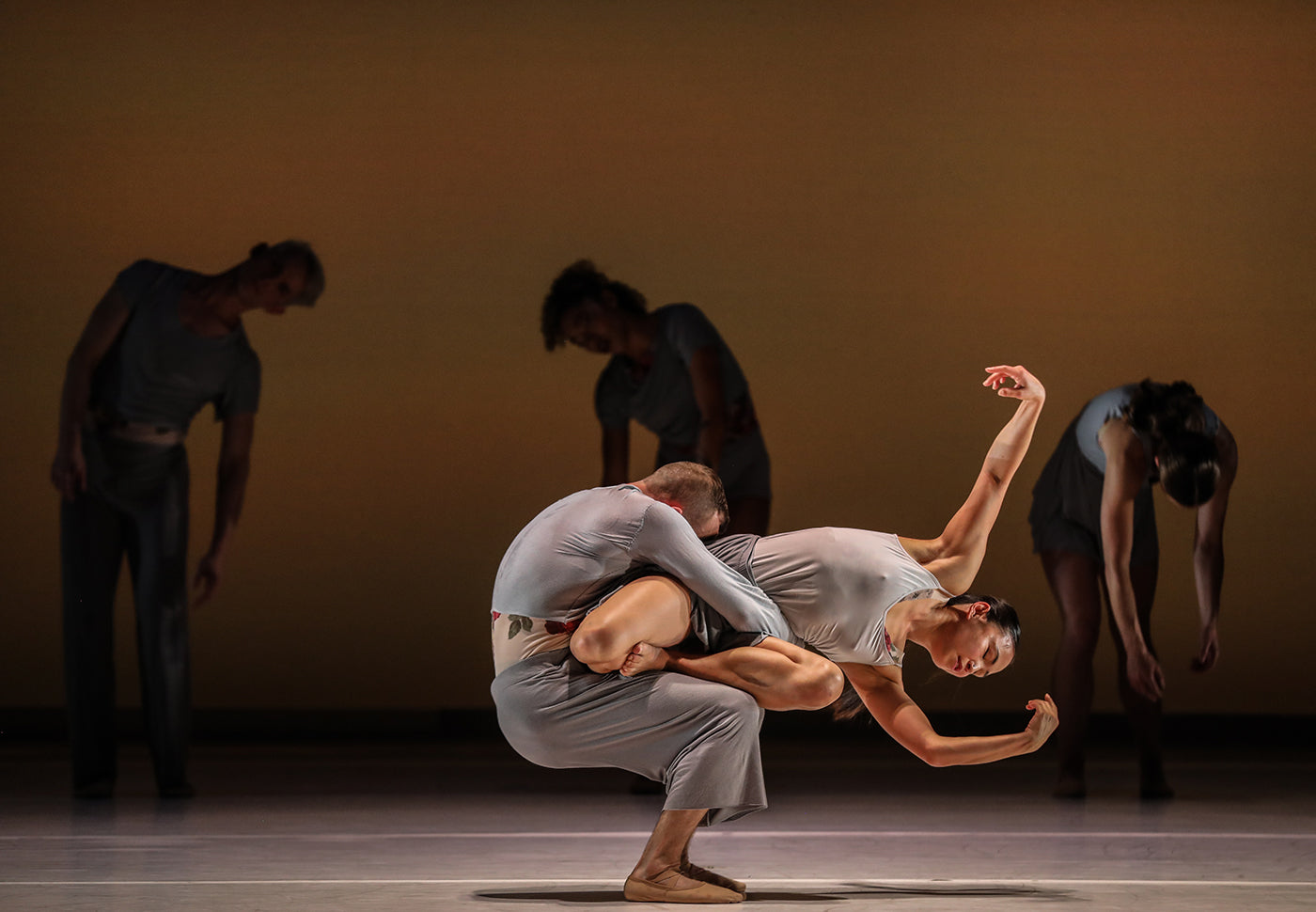Perfect for the Snapchat generation because of the short performance snippets, the concerts, which were also populated by others, including tapper and 2015 MacArthur Fellow Michelle Dorrance, and Virgil “Lil O” Gadson, a hip-hop competitor on season eight of So You Think You Can Dance, nevertheless felt more like a nod to BalletTHEN, with several pas de deux ripped from the past, than a veritable contemporary take on the art form today.
Still, there were some savory nuggets, all helped immeasurably by Grant Gershon’s deft conducting of a live orchestra, with the Irwin/Peck duet one of them—seen only on Saturday night. Choreographed by the dancers and Damian Woetzel, “Time It Was/116,” from 2015, was set to a ticking metronome, with Irwin, an elastic and versatile mime, and Peck, a pirouetter nonpareil, eventually swapping styles and doing cool things with hats, Peck in Fosse mode with a bowler, Irwin a top-hatted dandy. Like Harpo Marx and Lucille Ball in their famous 1955 “mirror” routine from I Love Lucy, this oddball pairing proved endearing.
The comedic spell was quickly broken, however, with Lauren Cuthbertson and Marcelo Gomes (this formidable dude is everywhere these days, having recently partnered Misty Copeland at the Hollywood Bowl), over-emoting in Kenneth MacMillan’s 1974 “Manon.” Their duet was a throwback to high melodrama, the erotic lifts and arched backs, set to Massenet and rife with cymbal crashings, feeding the romantic frenzy.
From syrupy Massenet to the prickly brilliance of Stravinsky—the second movement of his “Capriccio for Piano and Orchestra”—Isabella Boylston and James Whiteside tackled the duet from Balanchine’s “Rubies.” As part of Mr. B’s showpiece “Jewels,” often described as the first full-length plotless ballet and now 50 years old, this pas de deux lacked the requisite sparkle. While the dancers displayed the choreographer’s signature spikiness, flexed hands and feet, and hip thrusts, without the full ensemble a certain momentum was lacking.
Christopher Wheeldon’s pas de deux from “Carousel (A Dance),” was made in 2002 and inspired by Rodgers and Hammerstein’s “Carousel.” Set to the glorious score by Richard Rodgers, the psychologically dark and powerful work gave Peck and Zachary Catazaro an opportunity to shine. This was genuine emotion, with Peck’s isolation and yearnings palpable, her desperate need for this man, a loner by nature, physicalized to the point of heartbreak.
“In Creases,” with four women and four men, by Justin Peck (choreographer-in-residence at City Ballet and no relation to Tiler), premiered in 2012 to Glass’ “Four Movements for Two Pianos.” Enhanced by the onstage presence of musicians Bryan Pezzone and James Lent, as well as the propulsive DNA of the score, the work featured frequent jumps, arm and hand gestures, and repetitive sequences. The unaccredited costumes were unfortunate, with the women in dull-colored leotards and the men sporting black socks and soft dance shoes underneath equally dull, two-tone tights, the garb resembling onesies.
Still, the solos and unison work were intriguing, with a ritual-like atmosphere in play: one man lay face down, the others, seemingly blind to this, carried on; a pair of women had a kinetic stare-down before being joined by two men. Paths were created, paths were dispelled in this often dream-like tableau.
Also dreamy, but in a more intimate fashion, was another Wheeldon work, his pas de deux from, “After the Rain.” Set to “Spiegel Im Spiegel,” by Estonian holy minimalist, Arvo Pärt, the work became an instant classic when it premiered in 2005 with Wendy Whelan and Jock Soto.
Ably partnered by Reece Clarke, Peck (it’s good to be the curator), is the definition of ethereal, seemingly feather-light and resembling, at times, a hood ornament on a Rolls Royce. The quiet, contemplative music was perfectly reflected in their floaty, serene moves. If this is innocent love, all hearts and swoon, please keep it coming.
Continuing the romantic mood but on a grander, albeit, older-school scale, were Cuthbertson and Whiteside, who assayed the Balcony Scene from Macmillan’s 1965 “Romeo and Juliet.” With Prokofiev’s lush score the driving force, this was ballet-by-the-numbers—beautiful but expected, and decidedly lacking in ardor. Studio Sereno’s scenic fabrication, a cheesy set of stairs and a balcony, did not help, as it was more chemistry that was needed, not a prop.
The wonderfully jaunty “Who Cares?” concluded the program. Set to eight George Gershwin tunes (pared down from 16), the suite was made by Balanchine in 1970, some 33 years after the composer died from a brain tumor (the choreographer had originally gone to Hollywood in 1937 to work with the composer on Samuel Goldwyn’s “Follies.”)
What emerged, lo those many decades later, endures. The sheer scope and hummability of Gershwin’s tunes, combined with Balanchine’s spectacular way with the body, make for a breezy and much needed escape from reality, especially in 2017.
Peck and Catazaro again demonstrated their balletic bona fides in “The Man I Love,” both bewitching and besotted. Other fine moments included Boylston and Gomes in “Embraceable You,” while Peck embodied the playful “Fascinating Rhythm” with smiles and stamina.
The finale, “I Got Rhythm” is the dance equivalent of methamphetamine, with joy emanating from every pore of the eight performers, including a fine Harrison Coll, Indiana Woodward, Jeanette Delgado and Taylor Stanley.
As spirited and heartwarming as the work is, though, if this is truly the state of ballet now—a few gems amid a plethora of classics—and virtually no risk-taking (same sex partnering, edgier music from today’s crop of composers, even more ensemble work, for example), one must seriously wonder what BalletTOMORROW will look like. Hopefully, Peck’s project will find more adventurous footing in the future, with bolder programming befitting the splendid dancers.









comments